#water primordial
Explore tagged Tumblr posts
Photo

Draw Everything June, day 3! Decided to draw Kaito in an alternate outfit because I did not want to draw a long skirt in this pose xD Character: Kaito (they/he)
#art#artists on tumblr#OC#original character#digital art#OC Art#DrawEverythingJune2024#Draw Everything June#fantasy#elemental#water elemental#water primordial#primordial#OC:: Kaito#draw everything june 2024
15 notes
·
View notes
Text



Not dressed for the weather ❄️
#ffxiv#final fantasy xiv#primordial flame: shiun kazumasa#thancred waters#au ra#ff14#my art#thaniun#comic#fellas is it gay to give your best friend your giant coat#it's all warm and toasty#woe pre-light poisoning shiun be upon ye#wolship#wolcred
251 notes
·
View notes
Text
‼️‼️ANORITH SWEEP‼️‼️

HES FUCKING SWIMMING WITH HIS WINGS
81 notes
·
View notes
Note
russian person here to verify that yes, meropide looks exactly like st. petersburg
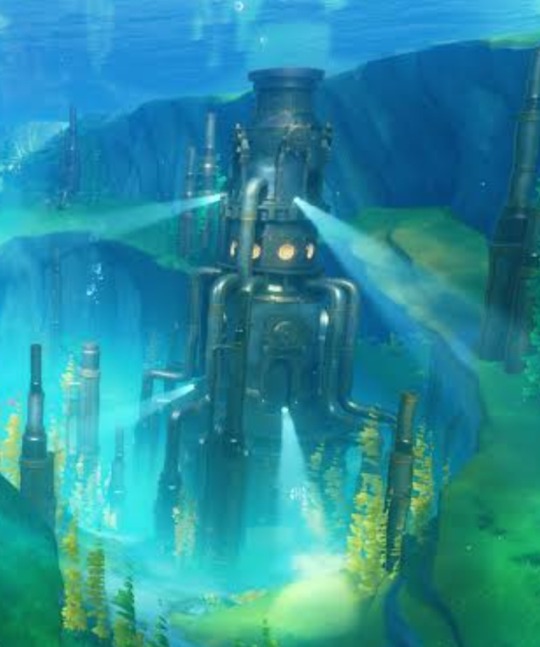
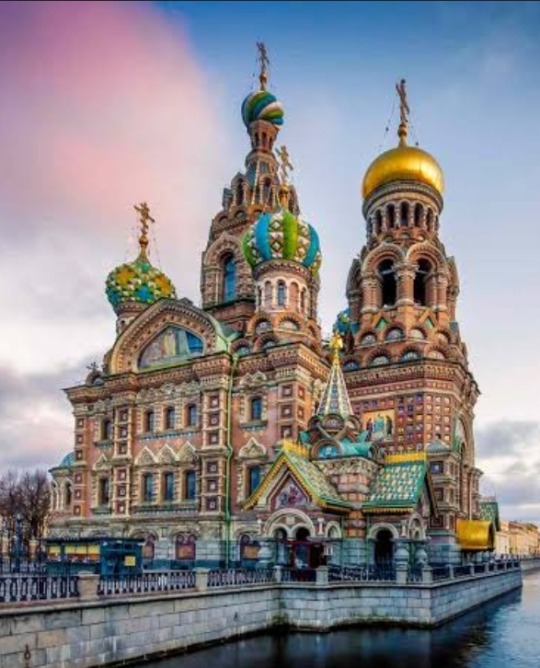
Oh my god
#this is the part where we speculate that wrio is actually born of snezhnaya#so technically he wouldnt dissolve in the primordial sea water#okay but i can see it tho#lyssten to my rambles
98 notes
·
View notes
Text
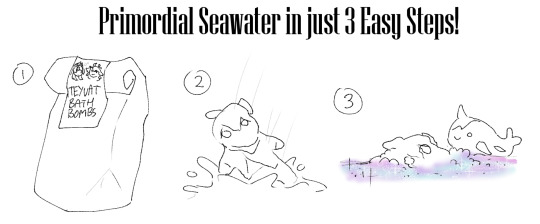
4.2 livestream tomorrow! here's my very serious childe lorecrafting theory
#the true signifier of peace is yae miko and kokomi starting a small(?) business together. girlbosses ig#anyway why's the primordial water that can kill specifically french people all sparkly and pastel coloured. hilarious#genshin impact#my art
300 notes
·
View notes
Photo
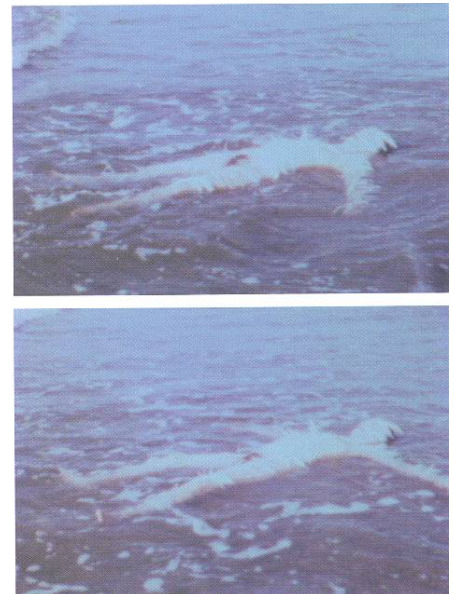
Ana Mendieta, Ocean Bird Washup, 1974, Still from Super-8 color, silent film, 4 min. 30
#ana mendieta#art#performance art#water#ocean#womb tomb dreams#from the primordial ooze#missives from the bird boat#contemporary art
929 notes
·
View notes
Text
Can't stop thinking about the fact that Wriothesley is a former underground boxer.
Was it... legal? Did he do it for money? For the thrill? He's called a "Duke" now, but it's unclear if that was a title awarded for his ascension to the head of the Fortress of Meropide (like the monarch "knighting" outstanding people (Sir Patrick Stuart for example)). It's perfectly likely that he had a humble start in life.
The livestream also confirms that Wriothesley is a somewhat recent addition to Meropide, so I'd say he's only had this role for a few years at most. Does that mean he was boxing up until recently too?
Wriothesley is covered in scars (there's a huge one on his neck)... Is that from his past? Did someone pull a knife out in a fight, or was he attacked afterward from some disgruntled opponent?
If this was an illegal practice, he could have been set up to lose a fight and refused, then attacked by whatever mob bosses he fucked over.
Idk. I enjoy the idea that in his younger years he wasn't quite so upstanding - I have this image in my mind of little twenty-something Wriothesley getting caught when the underground fighting ring got taken down. Everyone's put on trial but really Neuvillette & the courts care about the organisers, not the fighters that got caught in the crossfire. And Wriothesley is all freshly scarred and clearly not guilty of all the financial crimes going on behind the scenes.
Obviously there's some class disparity in Fontaine. Wriothesley has that voiceline "don't break the law... seriously" but he also reformed Meropide and treats the reasonable inmates as equals. Imagine if that came from his history, seeing his peers be punished for actions that society forced them into. And maybe Wriothesley got off lightly, but he'd be able to empathise with all the people who didn't.
And there's that official art of Wriothesley and Neuvillette in the office together, which obviously doesn't confirm that they have met (yoimiya & Kaeya art lol), but they almost certainly have. So I wonder if it was that near miss with a guilty verdict that put Wriothesley on Neuvillette's radar. Neuvillette is caring, so maybe he took steps to help the people who got caught up in the fighting, including Wriothesley. And it's those connections that later allow Wriothesley to take a position in Meropide, making the reformations that treat those who are guilty more fairly.
Anyway yeah. Wriothesley.
#genshin impact#wriothesley#Neuvillette#fontaine#4.1 livestream#wriolette?#idk there's not enough material#also i think Wriothesley could be morally interesting#in the trailer lyney seems to think he's done something to freminet and lynette#and meropide is an autonomous entity not under even Furina's jurisdiction#which means Wriothesley can care about the law#but also he can choose which laws to enforce#and can even make up his own laws since meropide is separate#and when judging the inmate's actions Wriothesley is literally judge and jury#which means he might be pro abiding the law#( since he knows that the punishment for disobeying isn't worth )#but also personally disagrees with the actual law#also unrelated but i lowkey think the currency of meropide is that primordial sea water drug#and Wriothosely knows about it he just thinks it's a means to an end
381 notes
·
View notes
Text
Day 16: Cackle
🎀 TkTober Day 16: Cackle
🎀 Tags: Neuvillette/Wriothesley/Clorinde (platonic) , Sigewinne being super adorable, tea parties!
“I will see you tomorrow, Sedene.”
“Have a good evening, Monsieur!”
Neuvillette waves as the elevator begins to move with a jittery clank that would alarm most but him. It’d been a while since he’d last visited the Fortress of Meropide but the ever-unchanging rustiness of the elevator was a familiar comfort—much of Fontaine has changed since Furina’s retirement, and yet this would remain the same.
Tonight’s occasion would also be a wonderful journey down memory lane. Sigewinne had graciously invited him to attend her tea party, and both Chlorinde and Wriothesley also accepted the invitation. He extended the invite to Furina who’d promptly rejected him after discovering the duke would be there as well; try as he might to foster an amicable relationship, she was still hesitant to reach out to those whose lives were affected by the rulings of the Oratrice Mecanique d'Analyse Cardinale. It was a change he knew would have to come in time.
For now, until the day she was ready, he would watch nurture these relationships in her place
The elevator dings as it descends to the bottom. The prisoners bark excited shouts as they spy him, some waving and others running away, but strangely neither Wriothesley nor Chlorinde are ready to greet him at the entrance. He stands there a minute, waiting, but as the stares of the people grow more perplexed by the second, he shifts uncomfortably.
“Mister Neuvillette!”
“Sigewinne.” He smiles as the little head nurse approaches him. She waves, cheerful, and he kneels to pat her head. “How are you? Where are the other two?”
“Everything’s good! Well, except,” she huffs, gesturing in the direction of the duke’s office. “Those two won’t come out and enjoy the tea party!”
Strange. There were no pressing cases or concerns that should occupy them on this occasion. Neuvilette hums. “Do you know why?”
She giggles, amusement sparkling in her eyes. “See for yourself!”
It is a short walk to the office, made shorter with haste when Sigewinne leaves halfway to brew a new pot of tea. There’s no reply to his knock on the door, but the office was made soundproof to begin with, and Neuvillette pries it open with ease. The ringing echo of a cackle greets his ears, and he huffs in understanding.
Those two…
“Wriothesley! Chlorinde! You’ve kept Sigewinne waiting.”
The laughter doesn’t cease. It is an even shorter walk up the spiraling stairs and Neuvillette is both unsurprised and unimpressed by the sight of Wriothesley splayed over Chlorinde, both their outer garments discarded on the nearby couch, her boot kicking his thigh as she tosses her head back in laughter. His hands, gloveless, dig into her waist, and he looks up with a grin.
“There you are! Rare of you to run late, Monsieur.”
“Neuvillette! Ahehaha get this dog off mehehehe!” Chlorinde’s back arches as she shrieks, Wriothesley’s hands climbing up her sides and under her arms. Her right comes sharply down to protect herself as the other slaps his hand, the sound reverberating. In response, Wriothesley only climbs further onto the desk, tickling her with newfound amusement.
This too, Neuvillete supposes, is a constant that’s yet to change.
He sighs, pinching the skin above his nose as Chlorinde’s leg hits the desk with a resounding bang! The image forms neatly in his head: Sigewinne trying to pry the two apart with no avail, her poor tea and cookies abandoned until he arrived late from work. He’d mistakenly assumed the other two would be timely and have started the party without him but…
Well, in a way, this could be considered a party. His lips twitch as Chlorinde’s voice cracks when Wriothesley’s hands give into the meat of her thighs, a weak point, and he looks at the wetness beginning to gather in her eyes.
“Come on, bodyguard. Can’t handle a little tickling? I’m sure you—Eek!”
Wriothesley leaps back, desk suffering yet another kick in the process, as his arms snap to his sides. It’s too little, too late, and a fresh cackle bursts free of him as Neuvilette tweaks the ends of his ribs. “Monsieur!”
“Behave, Duke,” Neuvilette warns, though there’s amusement in his tone that has Wriothesley cringing away in panic. “You can handle a little tickling, can’t you?”
“Wait—wahahhait noho!”
“You’ve kept Sigewinne waiting so long she has to brew a fresh pot now,” he tsks. “We’ll have to entertain ourselves in the meanwhile…”
“Neheheheuvillettehehehe!”
The sound of cackles rings through the room once more. It is only once Neuvilette properly tires him out (with the aid of Chlorinde’s masterful fingers once she recovers) that he hauls them both to Sigewinne’s party. Quite literally, as they’ve decided to exhaust themselves beforehand; the sight of him carrying Fontaine’s strongest duo, one tucked in each arm, has the prisoners whispering and both Wriothesley and Chlorinde’s faces burning red. None of it matters as much as the way Sigewinne’s face brightens when she sees them entering the room, a freshly brewed pot of tea set on the table.
#genshin impact#tickling#wriothesley#neuvillette#clorinde#neuviwriolinde#is that their name?#tickletober 2024#my fic#I wont lie that cutscene when they're sealing off the primordial waters.... WHEW...#need more content of these three you can't tell me clorinde and wrio don't have little tea parties together#everyone gives sigewinne presents!!! everyone!!!!#thats my daughter
21 notes
·
View notes
Text
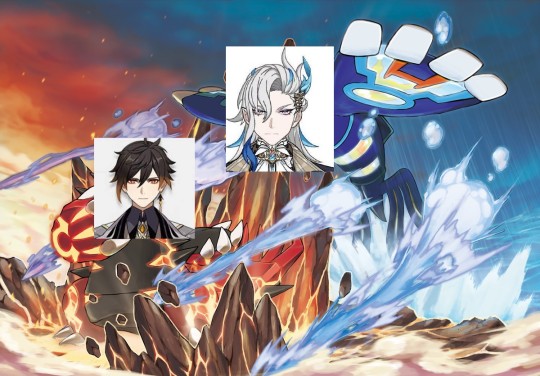
did anyone say LAND VS SEA
did anyone say PRIMORDIAL SEA
i honestly think zhongli fits as zygarde better bc order but eh this works too
#genshin impact#neuvillette#zhongli#pokemon#groudon#kyogre#neuvi definitely isn't beating the kyogre allegation with his charged attack and that primordial water sealing scene#and the personal rain#especially the personal rain#and the leviathan constellation
144 notes
·
View notes
Text
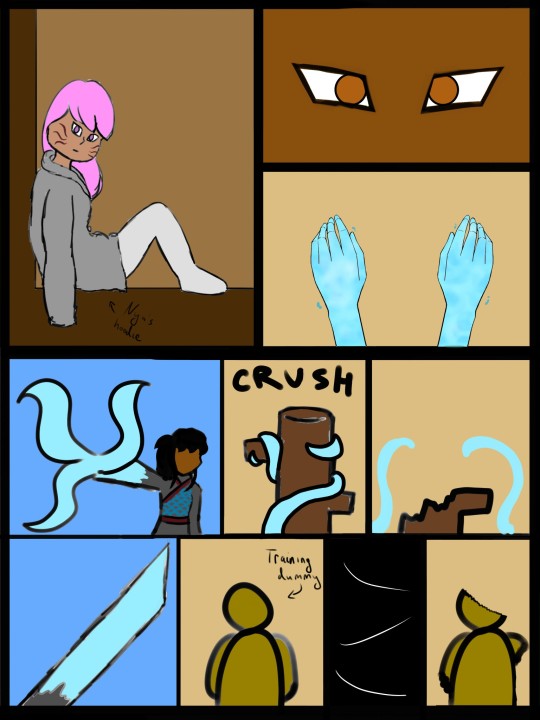
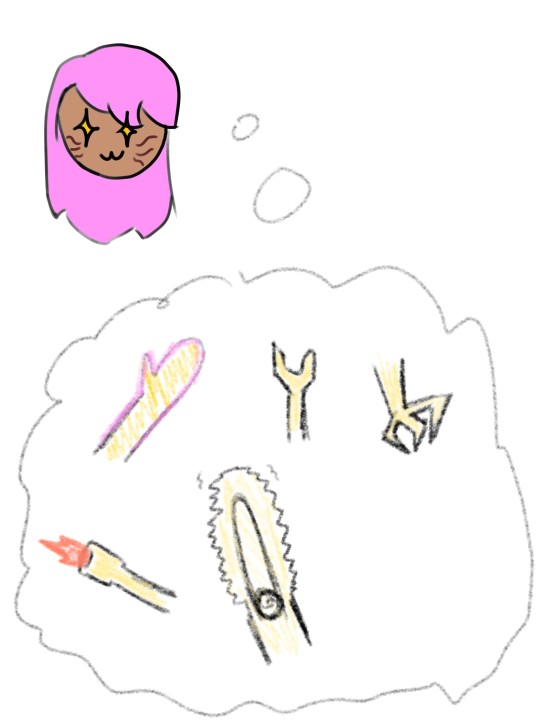
Sora watching Nya train and getting ideas
#ninjago#ninjago nya#nya jiang#nya ninjago#nya smith#ninjago dragons rising#dragons rising#sora ninjago#ninjago sora#ninjago prodigy duo#ninjago watertech duo#this is two hcs in one:#Nya having parts of her body turning into water and learning to use that#Sora being able to use her powers on her prosthetic#nya was a primordial being of water#there should be consequences to temporary godhood
27 notes
·
View notes
Text
Why Marvel spelled it "Khonshu"
First of all, there is not one correct spelling of this name as Egyptian hieroglyphics cannot be directly translated into the alphabet, and the pronunciation and spelling of the name have changed over the millennia.
To understand where this spelling comes from, one must first look at the history of the name: The spelling in the Old and Middle Kingdoms suggests that the name was pronounced something like χansVw. The V stands for a short unknown vowel that could not be recreated because ancient Egyptian script has no vowels. That's why direct transcriptions of hieroglyphics just write the name as "hnsw". The spellings Khonsu, Chensu, Chonsu, Khonsou, Chonsou, Khesnu, and Khensou are all derived from hnsw/χansVw, .
However, "Khonsu" is not the "authenthic" pronunciation of the name, because a) the English Khonsu is pronounced xɛnsu and not χansVw, and b) the original name for Khonsu contains the unknown vowel. It is even quite possible that Egyptians of the Old Kingdom used a different vowel for the name than the ones of the Middle Kingdom. In the Amarna period, the name was pronounced ˈχansə, and around 800 BCA, it was χans. Interestingly, the pronunciation ˈχansə seems to have survived in the Meroitic language in words like uṣiḫaanša. From χans, the spellings Chons, Khens, Khons, Hons, etc., are derived. In Coptic, χans became Ϣⲟⲛⲥ, from which the spellings Shons and Schons are derived. Additionally, there is a Hellenized version of the name: Chespisichis/Khespisíkhis, from which, for example, the Portuguese name for Khonsu, Quespisiquis, is derived. The Greek version did not become the dominant form however, unlike for other gods such as Osiris, Isis, Seth, Nephthys, Horus and Anubis (Ausar, Aset, Sutekh Nebet-het, Heru and Anpu are the actual Egyptian versions of their names)
For reasons that will be important later, I first need to explain Khonsus role in the Theban pantheon. Every ancient Egyptian city had its own hierarchy and local versions of gods and myths. Different attributes and tasks were assigned to different gods in different citys. Amun, Khonsu, and Mut were the patron gods of Thebes, though they were relatively unknown until Thebes became the capital city of Egypt. This led to the cults of these gods becoming extremely popular. It is hard to comprehend just how incredibly powerful the priesthood of Amun was.: the priests of Amun were rulers in their own rights during the 21st Dynasty, and in the Greco-Roman period people used the Temple of Khonsu in Karnak to make temple oaths that governed civil matters like debts, compensations, inheritance, and divorce. Thus, the priesthoods in Karnak held significant power within Ancient Egyptian society.
I believe Marvel had difficulty understanding that Egyptian mythology did not have THE ONE pantheon that stood above the rest of the gods, like the 12 Olympians or the gods of Asgard. The Ennead of Heliopolis, was very important in the city of Heliopolis as it had two primary functions: 1) It served as a divine council for resolving disputes among the gods, and 2) as a generation of creation gods. Cosmogonies (creation myths) were different in every city, with each city placing its local gods at the top of the creation chain. In Thebes, the Ennead also existed, but it played a significantly smaller role in the Theban pantheon since they were not considered to be the gods who actually created the world. Additionally, it partially consisted of different gods than the "classic" Ennead. Thus, the Theban Ennead primarily served as the court and council of the god-king Amun-Ra. While Osiris and Horus were still considered to be quite important compared to the rest of the Ennead, they were very much merged with the Theban versions of Amun and Khonsu. Tasks that were typically attributed to Isis in other cities, for example, were assigned to "Hathor chief of Thebes" (a local Theban version of Hathor, not to be confused with "Hathor within the Benenet": another local Theban version of Hathor who was revered as the consort of Khonsu-Neferhotep).
There are several Theban cosmogonies, but they generally follow this pattern: At the beginning, there was a creator god who was a form of Amun. This creator god had a son(s) who were sometimes deities like Khonsu and Tatennen, but also could be other aspects of Amun (for example, in some inscriptions, the creator god Amun Kematef creates his "son" Amun Irita, but Amun Irita is just another version of Amun. This differentiation is sometimes made in Theban inscriptions to distinguish Amun as the dead creator god from Amun the king of the gods and Amun as part of the Ogdoad). The creator god then creates the eight gods of the Ogdoad with this son. The ogdoad is a group of four male-female twin pairs that in other cities is the very first generation of gods. The Ogdoad then together creates some form of the sun god, who then creates the Ennead.
The new Kingdom period made Khonsu into A creator god and sometimes even THE creator god The depiction of Khonsu as THE creator god is much rarer and is due to a fusion with Amun-Ra. He was known as “Khonsu, the great one, who comes forth from the primordial water” (as seen on the statue of Harwa from the Twenty-Sixth Dynasty in the Egyptian Museum, the magical healing statue of Hor in the Turin Museum from the Thirtieth Dynasty, the healing statue of a priest of the goddess Bastet in the Louvre Museum from the Thirtieth Dynasty, the healing statue of Psammetikseneb in the Florence Museum from the Thirtieth Dynasty, and in the inscription of Mentuemhat in the temple of the goddess Mut at Karnak from the end of the Twenty-Fifth Dynasty and the beginning of the Twenty-Sixth Dynasty respectively). In his form as the creator god who emerged from the primordial water, he was sometimes represented as a double hawk-headed man with four wings standing on two crocodiles as a symbol of his triumph over chaos. Alternatively, he was rarely represented as a creator god in the form of a crocodile with the head of a hawk, lying on a pedestal. According to the historian Armour, the two heads of the hawk represent the sun and moon. They also probably symbolize Khonsu as a divine lunar equivalent of the creator sun god. In this form, he combines the sun and the moon in a single creature, thus, he could be conceived as a mythical complex personification of death and rebirth simultaneously.
Khonsu-Re was known since the late New Kingdom, but he lost significance during the Greco-Roman period. We often imagine the triad consisting of Amun, Mut, and Khonsu as a father, mother, and child dynamik, but like everything in Egyptian Mythology, the family tree is more of a cycle: Mut could be the mother, daughter, and wife of Amun(-Ra), Amun was the father of Khonsu, but at the same time, Khonsu was also seen as a form that Amun takes at night or at the beginning of the new day, and Mut was the mother of Khonsu, but she was occasionally also referred to as his daughter. ("Khonsu who arrives as an infant after old age, made by his daughter, fashioned by his J-serpent, through her [Mut], he is greatest of gods and goddesses. That she gave birth to him in Thebes was in the form of an august child, the rn/i-scarab, in his manifestation of Khepri"). The reason for this is that the births of the sun and moon were not understood as one-time events but as events that repeated every day, month, or year (daily birth of the moon symbolizing the rising of the moon, monthly births symbolized the beginning of a new moon cycle, and yearly birth symbolized the beginning of a new year and the start of spring). As the sun and moon, Amun and Khonsu are children who grow old, die, and are then reborn in an ever-renewing cycle.
Khonsu as A creator god is the more commonly attributed role to him in Thebes and is more associated with his role as the son of Amun rather than as a moon and sun god. The khonsu cosmogony makes him into the second god to emerge from the primodial water after Amun-Ra Kematef. Basically Amun ejaculates the into the waters, Khonsu then swallows the seed, becomes pregnant by it and travels to earth to give birth to the Ogdoad on the so called island of flames. In a way all gods can be considered the sons of Amun(-Ra) but Khonsu fills the role of THE son of Amun: the firstborn, the heir, the most important, and the most revered. This position naturally aligns him with Shu, who in the Heliopolitan cosmogony is the firstborn son of Re. In fact, Khonsu adopts many aspects of Shu: like how he is regarded as a wind god and the holder of the sky. Early Egyptologists even thought that Shu and Khonsu were the same deity. I still have an annotated version of Herodotus' work from the 18th century, where the footnotes claim that Shu in Thebes was called "Khonsu Neferhotep." The confusion arose from some Ancient Egyptian inscriptions that used "Shu" as an epithet after the Khonsus name, which literally gives the name Khons-shu or Khonshu (as I have already explained, Khons/Chons was the spelling usally used during the late New Kingdom). But the Shu in Khonshu was not just an epithet but this merged form also had its own cult.
God splitting happens when an epithet becomes so interwoven with a particular epithet that it forms its own subaspect of the "main" deity. Like how "Hathor in Benenet", "Hathor, chief of Thebes" and "Hathor, chief of Dendra" are all aspects of Hathor with the epitheth stating which role they take on in the pantheon. Distinguishing between different forms of the same god can be quite important since there can be significant differences when it comes to their priesthood, temple attributes and their place in the Egyptian family tree. God splitting was very common fo Khonsu in Thebes: "Khonsu-Neferhotep," "Khonsu-pa-ir-sekher," "Khonsu-pa-chered," "Khonsu-wen-nekhu," "Khonsu-Shu," and "Khonsu-Thoth" all had their own small priesthoods in the Karnak Temple Complex. The priesthood of Khonshu did not have its own temple, unlike "Khonsu-pa-chered" or "Khonsu-pa-ir-sekher," but was housed in the main temple of Khonsu in Thebes, the so-called Benenet.
Essentially, all offshoots of Khonsu are differnet aspects for Khonsu-Neferhotep, who had by far the largest and most important priesthood. And Khonsu-Neferhotep is the aspect of Khonsu that gained the most importance. Therefore Khonshu is a part of Khonsu-Neferhotep and Khonsu-Neferhotep is a part of Khonsu. That is why Khonsu during the Old Kingdom was so different from the Khonsu of the New Kingdom period: The theban version of him eclipsed basically all of the bloodthirsty, cannibal versions of him that might have existed in other city during the Middle Kingdom Other Khonsus in other cities. That is essentially why it is so difficult to understand Khonsus's original role in the Old and Milde kingdoms aside from the bloodthirsty underworld deity. It even debatable to which extent the Khonsu in the pyramid texts and coffin texts was a moon god to begin with and when he first became associated with the falcon. It is difficult to say who Khonsu was before became Khonsu-Neferhotep, the patron god of Thebes. Therefore it might be more accurate to say that Khonsu-Neferhotep isn't just a partial aspect of Khonsu, he straight up became THE Khonsu. We do not even know what the cult of Theban Khonsu was like before Ramesses III built the Benenet and Hatshepsut grouped him together with Amun and Mut to triad, because nothing of the Pre-Benenet temple survived, just the knowledge that there existed one.
In any case, Khonshu primarily embodied Khonsu's aspect as a sun and creator god, which is why I have focused so much on these aspects. Therefore, he is referred to in inscriptions in various ways, such as: "He who sails to Western Thebes daily, who leaves offerings for the Great Ba of Kematef, who is there as Amun, in the Underworld chamber with the Bas of the Ogdoad." or "He who enters Manu bearing offerings for the Father of fathers of the Ogdoad, so that his face lights up and his heart rejoices upon seeing him, as the august child when he enters the Eye-of-Re (Thebes)." Or "He who returns pregnant from the Grotto of Nun with the prestige of his father in his body." Basically some priests of Khonsu-Neferhotep thought that the myth in which Khonsu becomes pregnant by drinking his fathers semen, and then fucks the universe into existence with Hathor is a linguistic masterpiece that deserved its own cult.
Presumably, the cult around Khonshu had something to do with ancestor worship, as it describes how Khonshu leaves offerings for Amun Kematef and the Ogdoad. In the Theban tradition, the first creator god and the Ogdoad are often described as being dead gods, which contrasts sharply with the idea that Amun should be the king of the gods. This is why there is a differentiation between Amun Kematef, the dead first creator god, and Amun Irita, the living creator god and king of the gods. Simultaneously, the epithet "Father of the Fathers of the Ogdoad" is used to distinguish Kematef and Irita from Amun of the Ogdoad. Some cosmogonies, like the Khonsu cosmogony, avoid this confusion altogether by simply replacing the last pair of the Ogdoad (Amun and Amunet) with the twin pair Nia and Niat. Technically, there is also a fourth generation of Amun, because the sun god that the Ogdoad collectively conceives (don't ask me how they managed that. The gene pool of the Ancient Egyptian Gods is just a puddle at this point) is often another aspect of Amun, like Amenope.
#egyptian gods#egyptian mythology#khonsu#khonshu#moon knight#what happened in the primordial waters stays in the primordial waters
26 notes
·
View notes
Text

I haven't drawn Marina (they/them) in ages, and figured it was time to change that :)
#digital art#art#oc#artists on tumblr#original character#fantasy#elemental#water elemental#primordial#water primordial#aether eternius#fan character#OC:: Marina
8 notes
·
View notes
Text


"Just sit tight and I'll have you good as new in no time."
AU in which Shiun is an android and Thancred is mechanic that found him in the dump and dragged him to his shop to fix him.
Solution Nine, along with the Arcadion, has an active robot fighting ring and Shiun quickly becomes a rising star with Thancred's help.
#ffxiv#ff14#dawntrail spoilers#final fantasy xiv#thancred waters#primordial flame: shiun kazumasa#au ra#ffxiv gpose#Cyber AU#cyberpunk#if youve ever seen real steel... thats the vibe#slow burn about a robot learning love#wolcred#thaniun#wolship
162 notes
·
View notes
Text

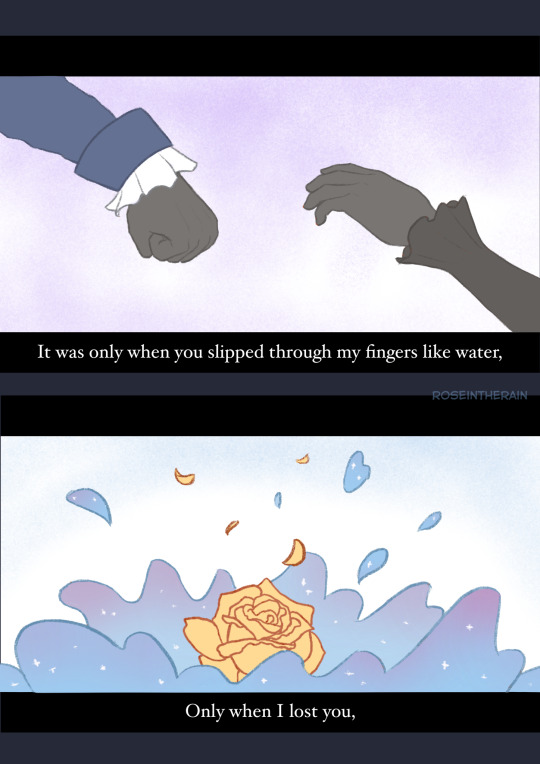
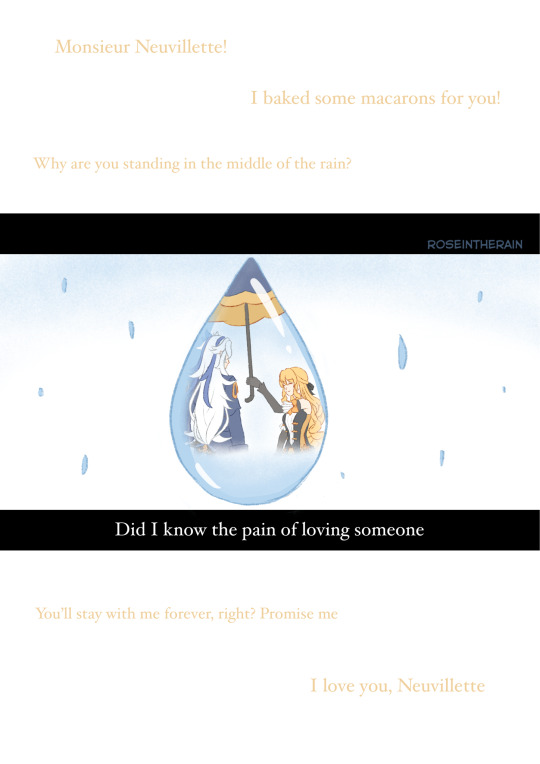
Now that the sun has disappeared,
Only endless rain remained.
aka the 4.2 neuvia angst created by the plot bunnies in my head
#I can taste the primordial water and the salt of my tears#I KNOW THERE’S LITTLE TO NO CHANCE THAT NEUVI WILL SAVE NAVIA BUT LET ME DREAM#genshin#genshin impact#原神#neuvia#genshin navia#genshin neuvillette#navia#navillette#neuvillette#fontaine#genshin ship#genshin 4.2#masquerade of the guilty#genshin art#genshin impact fanart#genshin fanart#genshin comic#angst#genshin angst
119 notes
·
View notes
Note
psii, what do you think of Sollux Captor? He's a chill guy in my opinion.

Your opIInIIon II2 noted and IIrrelevant. He exII2ted for a tIIme IIn my 2IIght
01100011 01100001 01110101 01100111 01101000 01110100 00100000 01101001 01101110 00100000 01100001 01101110 00100000 01110101 01101110 01100010 01101100 01101001 01101110 01101011 01101001 01101110 01100111 00100000 01110001 01110101 01100001 01110010 01110100 01100101 01110100 00100000 01101111 01100110 00100000 01100101 01111001 01100101 01110011 00100000 01110100 01101000 01100101 00100000 01110111 01101001 01110010 01100101 00100000 01110011 01101111 01101100 01100100 01101001 01100101 01110010 00100000 01100010 01100001 01110000 01110100 01101001 01111010 01100101 01110011 00100000 01101000 01101001 01110011 00100000 01110011 01101111 01101110 00100000 01101001 01101110 00100000 01110100 01101000 01100101 00100000 01100010 01101100 01101111 01101111 01100100 00101101 01100011 01101000 01101111 01101011 01100101 01100100 00100000 01100110 01101111 01101110 01110100
and nece22IItated my helmIIng code be updated. HII2 pre2ence and re2II2tance two my condIItIIonIIng 2o IIt progre22ed at half the rate of the average fIIll2 me wIIth the clo2e2t thIIng two annoyance a helm2man can feel
01110100 01101000 01100101 00100000 01100111 01101111 01101100 01100100 00101101 01110000 01101100 01100001 01110100 01100101 01100100 00100000 01110011 01101110 01100001 01110010 01100101 00100000 01110100 01101001 01100111 01101000 01110100 01100101 01101110 01101001 01101110 01100111 00100000 01100001 01110010 01101111 01110101 01101110 01100100 00100000 01110100 01110111 01101001 01101110 00100000 01110100 01101000 01110010 01101111 01100001 01110100 01110011 00100000 01100110 01101111 01110010 01100011 01100101 01110011 00100000 01110100 01101000 01100101 00100000 01110010 01100001 01100010 01100010 01101001 01110100 01110011 00100000 01110100 01101001 01100111 01101000 01110100 00100000 01100001 01100111 01100001 01101001 01101110 01110011 01110100 00100000 01110100 01101000 01100101 00100000 01110011 01100011 01110010 01100101 01100001 01101101 01101001 01101110 01100111 00100000 01110011 01110100 01100001 01101011 01100101 00100000 01110101 01101110 01110100 01101001 01101100 00100000 01110100 01101000 01100101 00100000 01101101 01100101 01101101 01101111 01110010 01111001 00100000 01101111 01100110 00100000 01110100 01100101 01100101 01110100 01101000 00100000 01100011 01101000 01100101 01110111 01110011 00100000 01100001 01110111 01100001 01111001 00100000 01110100 01101000 01100101 00100000 01100110 01110010 01101111 01101110 01110100 01100001 01101100 00100000 01101100 01101111 01100010 01100101
a2 IIneffIIcency II2 not tolerated IIn the EmpIIre. He wa2 caprIIcIIou2, 2tubborn IIn all thIIng2 mechanIIcal and per2onal--
01101000 01100101 01101100 01101100 01110011 00100000 01110011 01110100 01100001 01100011 01101011 01100101 01100100 00100000 01110111 01101001 01110100 01101000 01101001 01101110 00100000 01110100 01101000 01100101 00100000 01100010 01101111 01101110 01100101 00100000 01101101 01100001 01110010 01110010 01101111 01110111 00100000 01110010 01100101 01110110 01100101 01101110 01100001 01101110 01110100 00100000 01101111 01101110 01101100 01111001 00100000 01101000 01100001 01110110 01100101 00100000 01110100 01101000 01100101 01101001 01110010 00100000 01110011 01100101 01101100 01100110 00101101 01101101 01100001 01100100 01100101 00100000 01100100 01100101 01101101 01101111 01101110 01110011 00100000 01110100 01101111 00100000 01100010 01101100 01100001 01101101 01100101 00100000 01100110 01101111 01110010 00100000 01110100 01101000 01100101 00100000 01100011 01101111 01110010 01110010 01101111 01100100 01101001 01101110 01100111 00100000 01100110 01110010 01101111 01110011 01110100
two 2ay nothIIng of the fact hII2 per2onalIIty 2hould have been eroded away by the tIime of hII2 decomII2IIon--and a paIIn IIn my bIIowIIre-rotten 2IIde two keep out of the network2 confIIdentIIal fIIle2. II monIItored each and every one of hII2
01110100 01101111 01110010 01101101 01100101 01101110 01110100 01110011 00100000 01100101 01101110 01110100 01101111 01101101 01100010 01100101 01100100 00100000 01101001 01101110 00100000 01110000 01110010 01101001 01101101 01101111 01110010 01100100 01101001 01100001 01101100 00100000 01101001 01100011 01100101 00100000 01100011 01100001 01110100 01100011 01101000 00100000 01101001 01110100 01110011 00100000 01100111 01101100 01100001 01100011 01101001 01100001 01101100 00100000 01101111 01110010 01101001 01100111 01101001 01101110 00100000 01110111 01101001 01110100 01101000 00100000 01110100 01110111 01101001 01100011 01100101 00101101 01100100 01100001 01101101 01101110 01100101 01100100 00100000 01100011 01101100 01100001 01110111 01110011
traIInIIng2 for becomIIng an IInterrogator two 2ee IIf 2uch IImpertIInence contIInued and
01110100 01101000 01100101 00100000 01110011 01110101 01110000 01100101 01110010 01101110 01110101 01101101 01100101 01110010 01100001 01110010 01111001 00100000 01101110 01101111 01110110 01100001 00100000 01110101 01101110 01101101 01100001 01101011 01100101 01110011 00100000 01101001 01110100 01110011 01100101 01101100 01100110 00100000 01110100 01101111 00100000 01110011 01100001 01110110 01100101 00100000 01110100 01101000 01100101 00100000 01101110 01100101 01100010 01110101 01101100 01100001 00100000 01100010 01110101 01110100 00100000 01110011 01110100 01101001 01101100 01101100 00100000 01110100 01101000 01100101 00100000 01101100 01100101 01110110 01101001 01100001 01110100 01101000 01100001 01101110 00100000 01110100 01110010 01100001 01110111 01101100 01110011 00100000 01100110 01101111 01110010 01100111 01101111 01110100 01110100 01100101 01101110 00100000 01100111 01100001 01101100 01100001 01100011 01110100 01101001 01100011 00100000 01110100 01110010 01100101 01101110 01100011 01101000 01100101 01110011 00111011 00100000 01110100 01110010 01111001 00100000 01100001 01100111 01100001 01101001 01101110 00101100 00100000 01110100 01110010 01111001 00100000 01100001 01100111 01100001 01101001 01101110
luckIIly for the EmpIIre IIt dIid not. HII2 current 2tatu2 II2
01101100 01101111 01100011 01101011 01100101 01100100 00100000 01110100 01101001 01100111 01101000 01110100 00100000 01101001 01101110 00100000 01110100 01101000 01100101 00100000 01110110 01100101 01110011 01110100 01101001 01100010 01110101 01101100 01100001 01110010 00100000 01100011 01100001 01100111 01100101 00100000 01110011 01101111 00100000 01110100 01101000 01100101 00100000 01100110 01101100 01100101 01100100 01100111 01101100 01101001 01101110 01100111 00100111 01110011 00100000 01110011 01101000 01110010 01101001 01100101 01101011 01110011 00100000 01110101 01101110 01100100 01100101 01110010 01101110 01100101 01100001 01110100 01101000 00100000 01100010 01110010 01100001 01100011 01101011 01101001 01110011 01101000 00100000 01110111 01100001 01110100 01100101 01110010 00100000 01110000 01100001 01110011 01110011 00100000 01110101 01101110 01100100 01100101 01110010 01101110 01100101 01100001 01110100 01101000 00100000 01110100 01101000 01100101 00100000 01110100 01111001 01110010 01100001 01101110 01110100 00100111 01110011 00100000 01110100 01100001 01101100 01101111 01101110
unknown
01101000 01101111 01110111 00100000 01101100 01101111 01101110 01100111 00100000 01110100 01101000 01100101 00100000 01110011 01101001 01101101 01110101 01101100 01100001 01100011 01110010 01110101 01101101 00100000 01110111 01101001 01101100 01101100 00100000 01110010 01100101 01101101 01100001 01101001 01101110 00100000 01100100 01101111 01110010 01101101 01100001 01101110 01110100 00100000 01100010 01100101 01100110 01101111 01110010 01100101 00100000 01101001 01110100 00100000 01100011 01100001 01101110 01101110 01101001 01100010 01100001 01101100 01101001 01111010 01100101 01110011 00100000 01101001 01110100 01110011 00100000 01100110 01100001 01101001 01101100 01101001 01101110 01100111 00100000 01100110 01100001 01100011 01110011 01101001 01101101 01101001 01101100 01100101 00100000 01101000 01101111 01100010 01100010 01101100 01101001 01101110 01100111 00100000 01101100 01100001 01101101 01100101 01101100 01111001 00100000 01101001 01101110 00100000 01110100 01101000 01100101 00100000 01110011 01100001 01101110 01100100
and IIt IIs the hope of the EmpIIre he reappear2 2ooner rather than later two fIInII2h the job he 2tarted.
#homestuck#interrogatormentors#homestuck au#interrogatormentors au#askblog#anonymous#the helmsman#Helmsman Translation:#Your opIInIIon II2 noted and IIrrelevant. He exII2ted for a tIIme IIn my 2IIght#(caught in an unblinking quartet of eyes the wire soldier baptizes his son in the blood-choked font)#and nece22IItated my helmIIng code be updated. HII2 pre2ence and re2II2tance two my condIItIIonIIng#at half the rate of the average fIIll2 me wIIth the clo2e2t thIIng two annoyance a helm2man can feel#(the gold-plated snare tightening around twin throats forces the rabbits tight against the screaming stake#until the memory of teeth chews away the frontal lobe)#a2 IIneffIIcency II2 not tolerated IIn the EmpIIre. He wa2 caprIIcIIou2‚ 2tubborn IIn all thIIng2 mechanIIcal and per2onal--#(hells stacked within the bone marrow revenant only have their self-made demons to blame for the corroding frost)#two 2ay nothIIng of the fact hII2 per2onalIIty 2hould have been eroded away by the tIime of hII2 decomII2IIon--#and a paIIn IIn my bIIowIIre-rotten 2IIde two keep out of the network2 confIIdentIIal fIIle2. II monIItored each and every one of hII2#(torments entombed in primordial ice catch its glacial origin with twice-damned claws)#traIInIIng2 for becomIIng an IInterrogator two 2ee IIf 2uch IImpertIInence contIInued and#(the supernumerary nova unmakes itself to save the nebula#but still the leviathan trawls forgotten galactic trenches; try again‚ try again)#luckIIly for the EmpIIre IIt dIid not. HII2 current 2tatu2 II2#(locked tight in the vestibular cage so the fledgling's shrieks underneath brackish water pass underneath the tyrant's talon)#unknown#(how long the simulacrum will remain dormant before it cannibalizes its failing facsimile hobbling lamely in the sand)#and IIt IIs the hope of the EmpIIre he reappear2 2ooner rather than later two fIInII2h the job he 2tarted.
12 notes
·
View notes
Text
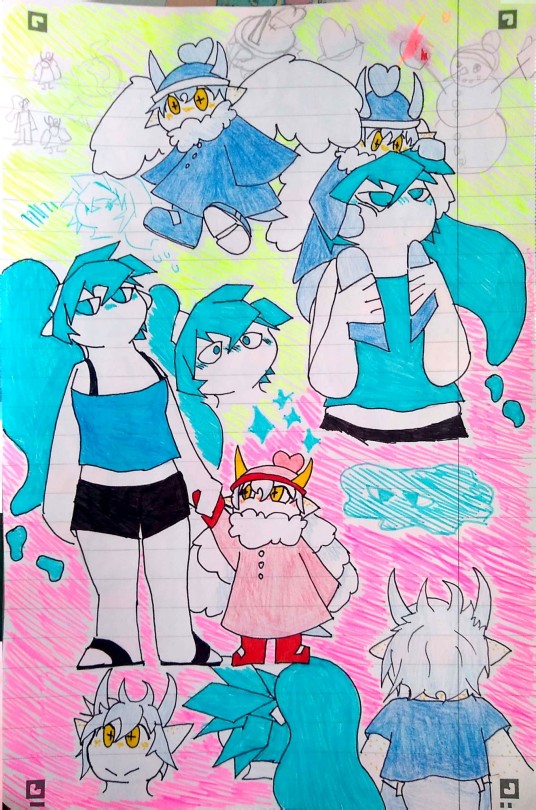
OC DOODLE PAGE UPON YE
my sillies Aria (formerly Nika) and Starlight :)
Aria isn't the stepmom she's the mom who stepped up. Never talk to her and her lizard child ever again
#Feli draws#Feli's OCs#pov the primordial water spirit rolls up and asks you to protect a wish granting dragon. she's wearing sandals and a crop top
13 notes
·
View notes